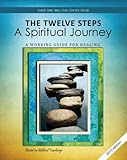Anger can be a very real problem for people in recovery from codependency, addiction, alcoholism or compulsive gambling.
Anger is a word we apply to a wide range of feelings. . .
- Anger can be as simple as a minor irritation.
- We frequently feel angry when we’re frustrated or when our plans are thwarted.
- Annoyances may be barely noticeable at first, but if annoyances continue, they can generate considerable wrath.
- We feel a form of anger when we’re disappointed and let down--most often it takes the form of resentment.
- When we’re angry, but don’t want to make a deal of it, we use a euphemism, "I’m really teed-off."
Anger is frequently a response to being hurt or suffering loss. Even so, we may not recognize it as such. For example, if someone says, "I never get angry," they may really not know how to recognize their anger. or they are very much aware of their anger and want to deny it, because they’ve been taught that these kinds of feelings are socially unacceptable, bad, or wicked.
Sometimes people want to deny their anger because they fear it--they fear that they’ll unleash a torrent of rage, go completely out of control, cause some kind of irreparable harm.
It is important to recognize the feeling of anger because anger is a natural emotion. It’s normal to feel angry at times. Anger becomes problematic when, on the one hand we pretend it doesn’t exist, or on the other hand we use or anger to manipulate and intimidate others.
There are two steps in understanding anger:
- First, get to know your own anger better--in all its varieties. Se how it affects you, how your breath quickens and your pulse pounds. Feel the flush of blood to your face and the tension in your hands, legs, neck and stomach. Notice how your facial muscles change, get a good look at yourself.
- Learn to direct your anger in an appropriate way to the appropriate people.
Expressing anger is a natural, healthy response and is necessary to keep oneself healthy and in balance. Sometimes feeling angry can be unpleasant. . .To hold anger back and dwell on it adds to the hurt that caused it.
There is a difference between a person who releases appropriate anger when injured and a person who seems to be chronically angry and venting most of the time. A chronically angry and bitter person often feels short changed in life and blames others for his problems. This is using anger as a defense and a rationalization for blaming others.
This is not healthy or appropriate anger. Specificity is a good measure of appropriate anger. It is tied to an event or situation that can be specifically described.
Assertive behavior prevents aggressive behavior. Assertive behavior protects one’s rights and feelings, whereas aggression attacks someone else’s rights and feelings.
See also;
Adapted from "Learning to Love Yourself: Finding Your Self-Worth" by Sharon Wegscheider-Cruse; Health Communications, Inc., 1987.










